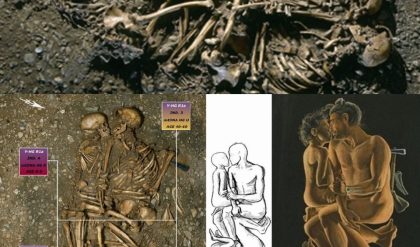
In the caves of Cuevas de la Araña (Spider Cave) in Valencia, Spain, archaeologists have unearthed a remarkable discovery shedding light on ancient honey collecting practices. Dating back 8,000 to 10,000 years ago, a cave drawing depicts a daring scene of a person scaling a rope ladder along the edge of a cliff to reach a precarious bee nest.
The depiction offers a glimpse into the ingenuity and risk-taking of early humans as they sought to gather honey from wild bee colonies. The use of rope ladders suggests sophisticated planning and execution, highlighting the importance of honey in the diet and culture of these ancient societies.
This finding provides valuable insight into the origins of beekeeping and the significance of honey in early human civilizations. It underscores the deep-rooted connection between humans and bees, a relationship that has persisted for millennia.
Further analysis and study of this cave drawing promise to unveil more secrets about the practices and beliefs of our ancient ancestors, offering a fascinating glimpse into the distant past.





